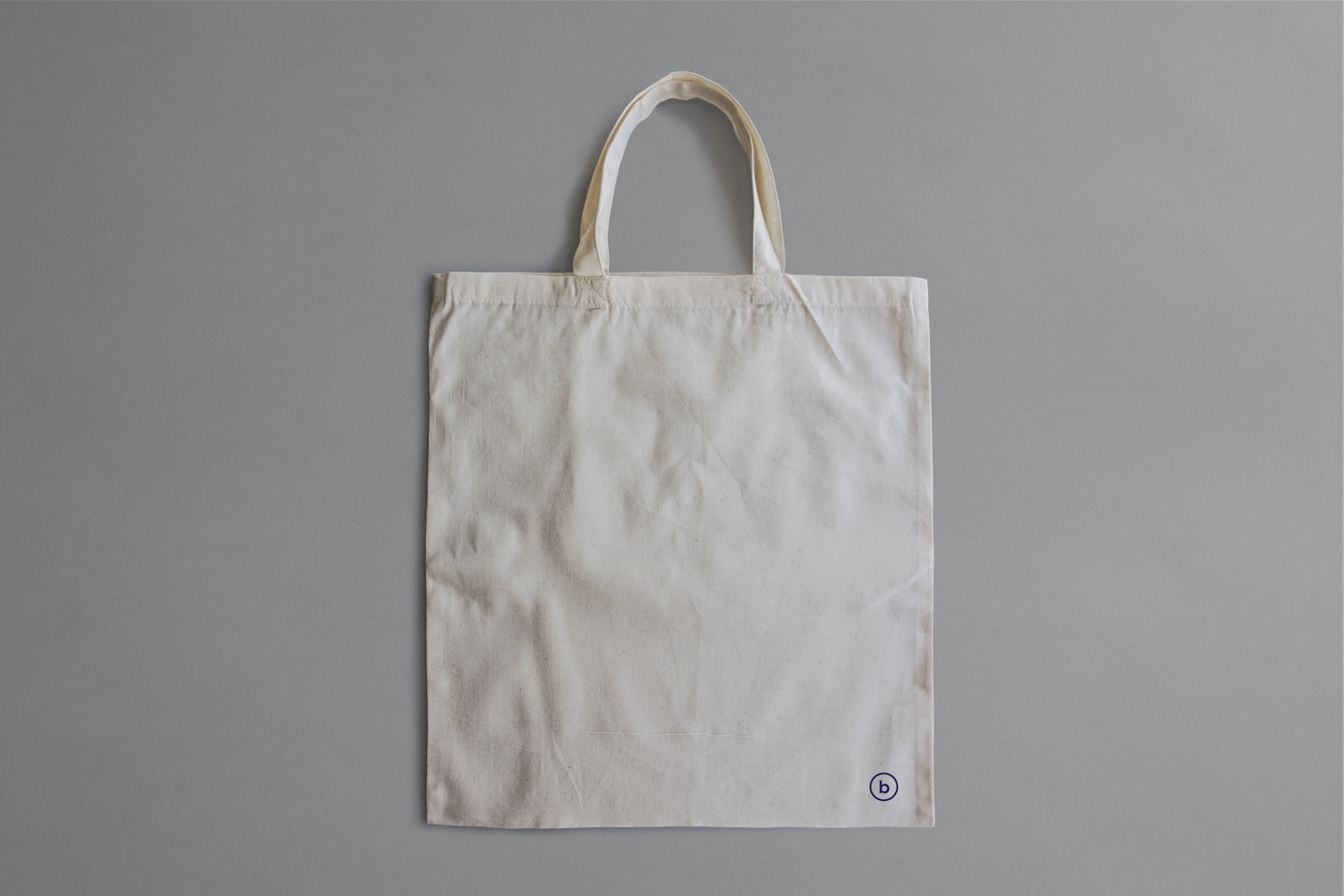1. Organic Cotton
Features
Organic cotton is grown without the use of chemical fertilizers and pesticides. It has a lower environmental impact compared to conventional cotton.
Benefits
- Eco-friendly: It avoids the use of harmful chemicals, preventing soil and water contamination.
- Biodegradable: It naturally decomposes, leaving no harmful residues in the environment.
Use Cases
Various fashion brands use organic cotton to make clothing and eco bags.

2. Recycled Polyester (rPET)
Features
Made from recycled plastic bottles, recycled polyester consumes less energy and emits fewer carbon emissions than traditional polyester.
Benefits
- Reduces plastic waste: It helps reduce plastic waste by repurposing used plastic bottles.
- Durability: Offers durability similar to traditional polyester with a wide range of colors and designs.
Use Cases
Outdoor brands often use recycled polyester for bags and clothing.
3. Hemp
Features
Hemp fiber is extracted from the hemp plant, which grows quickly and requires minimal water.
Benefits
- Durability: Hemp is incredibly strong and long-lasting.
- Eco-friendly: It requires little to no chemical fertilizers and helps improve soil health.
Use Cases
Hemp is used in eco bags, clothing, and footwear.

4. Linen
Features
Linen is derived from the flax plant’s stalks. It requires less water and pesticides and regenerates naturally.
Benefits
- Breathability: Linen is highly breathable, making it ideal for summer use.
- Biodegradable: It decomposes naturally, leaving no toxic residues.
Use Cases
Linen is commonly used in high-end clothing and household textiles.
5. Recycled Cotton
Features
Recycled cotton is made from repurposed cotton waste, reducing the need for new cotton production.
Benefits
- Waste reduction: It helps decrease waste by recycling discarded cotton products.
- Environmental protection: Reduces the demand for new resources through recycling.
Use Cases
Recycled cotton is widely used in the fashion industry for various products.

6. Tencel (Lyocell)
Features
Tencel is a cellulose fiber derived from eucalyptus trees. It is known for its softness and moisture-wicking properties.
Benefits
- Softness: Gentle on the skin and comfortable to wear.
- Eco-friendly: Made from renewable resources with minimal chemical use.
Use Cases
Tencel is popular in high-quality clothing and bedding.
7. Piñatex
Features
Piñatex is a sustainable leather alternative made from pineapple leaf fibers, which are agricultural waste.
Benefits
- Leather alternative: Promotes ethical consumption by replacing animal leather.
- Sustainability: Utilizes agricultural waste, positively impacting the environment.
Use Cases
Used in making bags, shoes, and clothing.
8. Cork
Features
Cork is harvested from the bark of cork oak trees without harming the tree, allowing it to regenerate.
Benefits
- Lightweight: Cork is light and waterproof.
- Sustainable: Harvesting cork does not kill the tree, making it a renewable resource.
Use Cases
Cork is used in bags, shoes, and accessories.

Conclusion
Using these eco-friendly materials can enhance the sustainability of eco bags and contribute to environmental conservation. By leveraging the unique benefits of each material in design and production, brands can offer more appealing and eco-conscious products to consumers.
